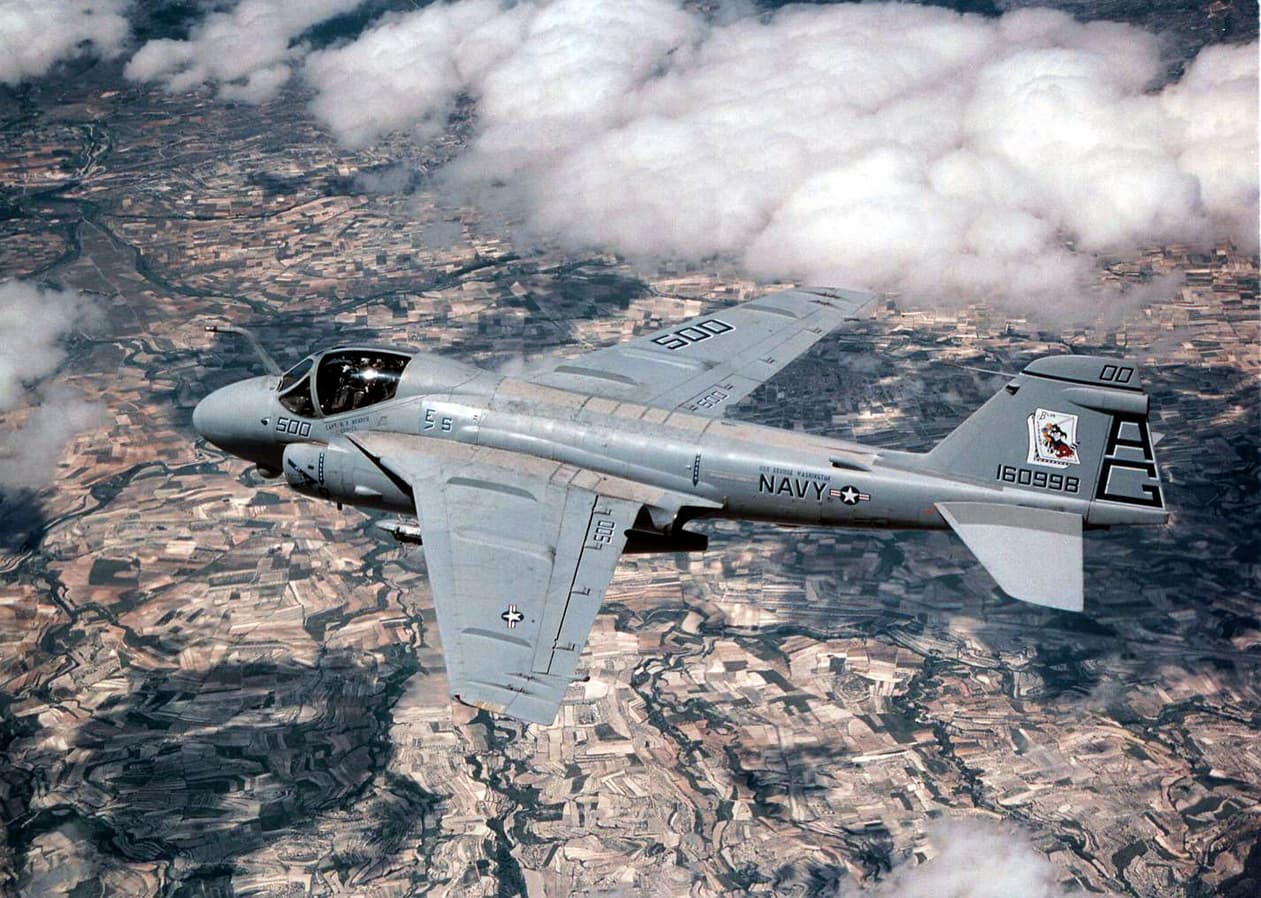Description and History
The System/Weapons Improvement Program (SWIP) was the final major upgrade to the A-6E Intruder, aimed at modernizing the platform’s avionics, survivability, and weapons systems. At its core, the program introduced enhanced software that allowed the A-6E to deploy a new generation of precision-guided munitions and stand-off weapons, including the AGM-65E/F Maverick, AGM-84A Harpoon, AGM-84E SLAM, and AGM-88 HARM. Alongside this expanded arsenal, the Intruder received updated electronic warfare capabilities through the installation of ALR-67 radar warning receivers and ALQ-126B countermeasure systems.
To further improve survivability, the upgrade included a modernized fire warning and extinguishing system. The cockpit was also outfitted with new digital armament control systems, updated weapons displays, and interface improvements that enhanced crew efficiency and situational awareness.
In parallel with these upgrades, the A-6E fleet was suffering from widespread wing fatigue due to metal corrosion and stress cracking, which had already grounded or restricted several aircraft. In response, the Navy initiated a rewinging program using new composite wings manufactured by Boeing. These wings, made from graphite, epoxy, titanium, and aluminum, promised increased service life and reduced maintenance demands.
However, delays in the composite wing program led to the creation of multiple SWIP subvariants: standard A-6E SWIP, which retained the original metal wing, SWIP Block 1, fitted with the new composite wing, and SWIP Block 1A, the final and most advanced version, combined the composite wing with improved avionics, including the ASN-139 inertial navigation system, ARN-118 TACAN, GPS navigation, and a new heads-up display.
The first rewinged SWIP aircraft was delivered by NADEP Norfolk to VA-176 on October 4, 1990. Overall, around 85% of the A-6E fleet was eventually rewinged, with 222 A-6E SWIPs retaining metal wings and 136 fitted with composite wings. The final A-6E SWIP built, BuNo 164385, rolled off the line on January 31, 1992, marking the end of Intruder production after 33 years.
The SWIP-modified Intruders entered service too late to influence early phases of the Gulf War, but two squadrons, VA-75 “Sunday Punchers” aboard USS John F. Kennedy and VA-145 “Swordsmen” aboard USS Ranger, deployed with early SWIP aircraft during the conflict. The Block 1A models first flew in 1994, but by that time, the Intruder’s service life was already drawing to a close. In fact, the Block 1A was never introduced to the fleet. All A-6E variants, including the SWIP Block 1A, were officially retired by February 1997, with their role in the precision strike mission taken over by the F-14 Tomcats and later passed on to the Boeing F/A-18E/F Super Hornet.









